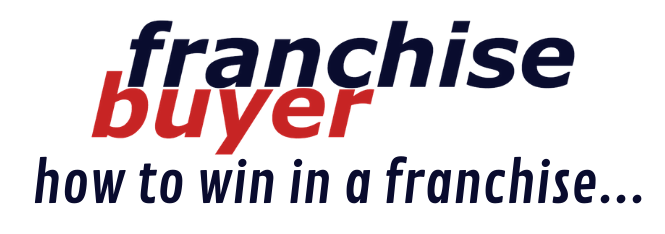April 05, 2019
Looking to waste a whole wad of marketing dollars? Pay-Per-Click (PPC) Pitfalls
If you are wanting to increase your reach for lead generation, the world of Google and Facebook Ads can be a good place to start.

When you’re looking at lead generation as a part of your marketing strategy you’ve got a couple of well-worn paths such as events or industry publications, websites and email databases. Those channels are great forgetting access to a well qualified pool of prospects but their reach can seem fairly limited compared to the seemingly endless reach of platforms like Google or Facebook.
If you’re looking to increase your reach then stepping into the world of Google Ads and Facebook Ads can be a good place to start, however, before you take that step here are some tips on where to start because the quickest way to spend big dollars for exactly zero ROI is to stumble into Pay Per Click (PPC) advertising as a newbie.
For reference, when we say that a prospect is “well qualified” it means that they have already been identified as having an appropriate set of attributes for the advertiser, and those could be anything from their location, demographics, business experience or personal interests, or any combination of those.
The whole point of an industry-focused marketing channel is that the prospects are pre-qualified so it’s a fairly safe bet as long as your marketing material is appropriate.
The danger of PPC channels is that they’re completely unqualified and it’s up to you to make sure you’re getting the right message in front of the right prospects, at the right time and price.
Here are the most important things to consider on your first try.
Get your network right
In the PPC space there are broadly two categories Content Networks and Search Networks.
Search Networks are like Google Ads or Bing Ads and they use keyword targeting as a primary mechanism to determine which prospects should see your ad. I really like search networks because you can have complete control and you know that there is an inherent “buyer intent” i.e. the prospect has actively search for that term and they’re looking for an answer. All you have to do is convince them that you have the best answer in the list.
Content Networks are pretty-much everything else, including Facebook, LinkedIn and every content-based website on the planet. Content networks can be great for tapping into niche topics like “Harry Potter” but there is rarely any “buyer intent” from the prospect, they are usually there to read the content on the page and they’re not scanning your opportunities. For that reason, your marketing strategy on a Content Network is completely different
to the approach you’d take on a Search Network, it’s content driven, and it’s something I’ll cover in a different article.

Sometimes a Search Network will give you access to a Content Network as well e.g. Google Ads lets you simultaneously run your campaign on their Search Network and their “Display Network” which is just another name for a huge pool of content-based websites. When given that option I almost always limit my campaigns to the Search Network as my ads are tailored to one or the other, not both.
Get your location right
When setting up an ad campaign the first thing you need to lock down is where (geographically) you would like to find your prospects.
Bear in mind that you can setup multiple campaigns and each campaign can target a different geographical location or even a
set of locations. Also remember that there may be geographical locations where you definitely don’t want the ad to show.
You will need to play with this setting a little bit as the campaign runs but I tend to start with a fairly restrictive region and then increase it depending on performance. One of the worst things for ROI is writing an ad that’s aimed at prospects from Melbourne and then letting it run across the whole of Australia.
Get your keywords right
Given that we’re focusing on Search Network ads for this article, the next big topic is Keywords. I’ve seen countless campaigns that have been bleeding money for no impact because of incorrect keyword targeting. Often the keywords that have been targeted are ok it’s just that they’re applied way too broadly. If you want to increase ROI you need to make sure your ads show to exactly the right prospects. No more, no less.
Here’s where people go wrong
If you had an Italian restaurant in Surry Hills then you might think to use the keywords:
italian restaurant
This is called a Broad-match and it will pretty much show your ad for anything vaguely related to Italy AND/OR restaurants, and by that I mean the Italian soccer team, napkins for cafes and everything in between. Your click-through rate (CTR) and conversion rate would be terrible but your entire budget would be used, guaranteed.
The solution is fairly simple.
First, use a broad match modifier instead, which is just:
+italian +restaurant
This will show your ad to anyone that searches for Italian concepts combined with restaurant concepts, which means Italian food, Italian cafes, Italian dining, restaurants in Italy.
This is the tip of the iceberg but just that tiny tweak can save you thousands of dollars and get you far better results.

Get your wording right
Once you’ve chosen your keywords you will typically write your ads, and I say ads, plural, for a reason.
One of the core tenets of marketing is to listen to the market, you need to see what clicks and follow that vein. To do this with search ads you should set up 3 or more ads for each set of keywords. Use different ways of explaining the opportunity and see which one gets the clicks and most importantly, which ones convert into sales.
If you’re using Google Ads then it will automatically show more of the ads that are working and less of the ones that aren’t, ultimately they want clicks too.
There are many more things to consider as you wade into the PPC market but those small tips will be enough to get you up and running with an ROI that’s somewhat acceptable.
Just remember that when you spend money on PPC you’re not actually paying the search network for a service that’s guaranteed, it’s more like you’re buying a seat at the table, and from that point onwards it’s up to you to out- manoeuver all the other advertisers to reach the best prospects. n
Happy hunting!















